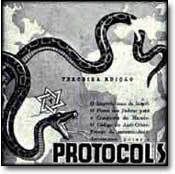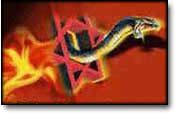Ibrahim Hamza was up before first light. When he went out to his
truck, he thought it was a simple flat tire. But it didn’t take long for
Hamza, from one of the founding Muslim families who settled this
village west of Jerusalem centuries ago, to realize that the tires had
been slashed on 28 vehicles on his street.
Before the media — along with the police and later the
president of Israel — began to arrive, Hamza and his neighbors found the
spray-painted graffiti, in Hebrew, scrawled on a nearby stone wall:
“Racism or Diaspora.” The English translation doesn’t quite convey the
message, which is closer to “Get out or else.”
Now, the attacks are growing and so are the targets, which include not only Muslims in the West Bank and Israel, but left-leaning activists, as well as Christian schools, churches and monasteries, which vandals have tagged with graffiti.
According to civil rights groups, price-tag attacks have grown from a handful in 2008 to 23 so far this year. One group counts more than 20 incidents at mosques and churches since 2010. There were three price-tag incidents in June in neighborhoods and towns around Jerusalem.
Israeli society is grappling with what to call the assaults. Are they “terrorism” or “hooliganism”? Or, as they are labeled now, “a criminal incident with nationalistic motives”?
Beyond semantics, the question is made more urgent by the fact that few perpetrators have been arrested, despite the prowess of the Israeli army, police and domestic intelligence services.
In a country where security cameras are ubiquitous and thick dossiers are amassed on Palestinian teenagers who throw rocks, many Israelis suspect the reason why more Jewish vandals are not arrested is that the state is not very interested in doing so.
In a poll released this week by Israel’s Channel 10 News, almost 60 percent of those surveyed agreed that the government “didn’t really want to catch” price-tag attackers.
There have been a few arrests. The most recent was Monday, when a 22-year-old Israeli was detained in connection with a price-tag attack at the Monastery of the Silent Monks at Latrun in September. Assailants torched the monastery’s doors and spray-painted
“Jesus is a monkey” and the word “Migron,” a reference to an unauthorized settler outpost forcibly evacuated by the Israeli army in September.
Many Israelis and Palestinians wonder who might be inspiring these acts. Suspicions fall upon ultranationalists and radical rabbis.
http://www.washingtonpost.com/world/israel-debates-jewish-price-tag-attacks-on-muslims/2013/07/05/6ce28e18-e333-11e2-bffd-37a36ddab820_story.html
![[9_10_s22.jpg]](https://blogger.googleusercontent.com/img/b/R29vZ2xl/AVvXsEjTXnQay9wzz0E6nVHrVhaHKoq_zYXDqZjijHlNDQzj90MZzInrCuVX4ciFYCiBfZ7lhlgr2bBhhnl7ddWbhdih5JbXjQYbA605TNyiq046bQqjG2A4S-nHTmh1VBTQSG6tmc23wq47QQ/s1600/9_10_s22.jpg)




No comments:
Post a Comment